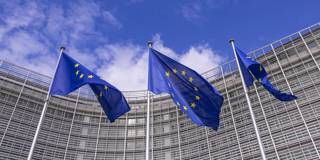While the European Union may be the most in need of an institutional transformation to respond to today’s polycrisis, it is also particularly well equipped to execute one. The key will be to develop a clear vision for the future, deepen cooperation in key areas, and establish a fundamentally new organizational framework.
GENEVA – Every historical period is defined by its own challenges. After World War II, Europe had to find a way to end the recurring and relatively independent crises linked to market cycles, domestic politics, and great-power competition that had torn it apart for decades. It met this challenge by building stable nation-states and effective welfare systems in a context of strong European and international frameworks.

GENEVA – Every historical period is defined by its own challenges. After World War II, Europe had to find a way to end the recurring and relatively independent crises linked to market cycles, domestic politics, and great-power competition that had torn it apart for decades. It met this challenge by building stable nation-states and effective welfare systems in a context of strong European and international frameworks.